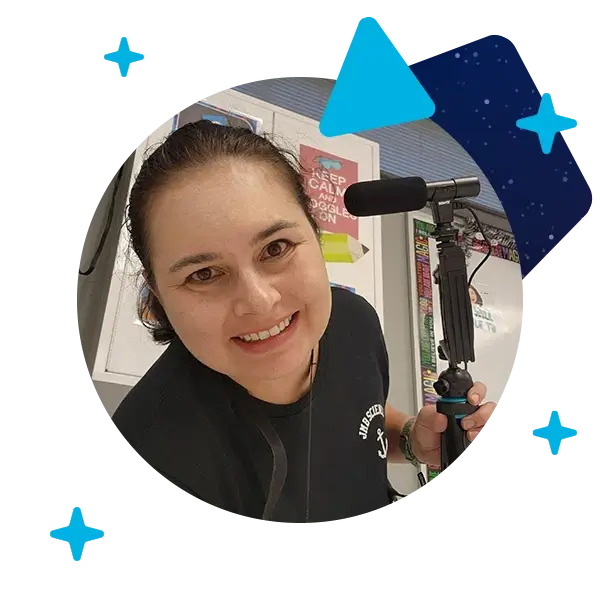Using Title Funds for STEM Education Tools & Technology

There’s no time to waste when it comes to science, technology, engineering, and math. Research shows that STEM concepts are best learned in elementary and secondary school since STEM-related skills are building blocks for career technical training and advanced study.
Are you looking for additional STEM funding? Keep reading to explore how Title funds can be used for edtech funding to support STEM learning.
What are the types of Title funds?
Different types of federal funds are available for education, including Title funds under the Every Student Succeeds Act (ESSA). Different types of Title funds align with various sections of the national ESSA legislation.
Title I – Improving the Academic Achievement of the Disadvantaged: Part A of Title I funds provide assistance to state and local education agencies (LEAs) to acquire additional resources for schools serving a large population of students from low-income families. These funds can be spent on resources to ensure all learners meet challenging state academic standards.
Title II – Preparing, Training, and Recruiting High-Quality Teachers, Principals, or Other School Leaders: Title II funds are available to increase student academic achievement by increasing the effectiveness of teachers, principals, and leaders.
Title III – Language Instruction For English Learners And Immigrant Students: These funds aim to help ensure English language learners (ages 3-21) and immigrant youth attain English proficiency and meet high levels of academic achievement.
Title IV – 21st Century Schools: Title IV funds “support the comprehensive needs of students in a variety of settings, strengthen family engagement, and bring America’s schools into the 21st century.” For example, funds might be used for career counseling, increased STEM engagement, or advanced learning opportunities.
How Title funds benefit STEM success for schools and students
STEM education funding can allow students to engage with subject-matter content in hands-on and interactive ways while they build a conceptual understanding of new material. More time with STEM also means students can learn about various careers that use science, technology, engineering, and math skills. Increased STEM funding for schools can also enrich learning materials and provide professional development to teachers.
The U.S. Department of Education recognized access to high-quality STEM education as a “critical component of learning recovery,” both in the near term to help learners get back on track and in the long run to prepare students for future challenges. In the same report, they included recommendations and examples of how Title funds can be used to impact STEM education.
Sample ways to use Title funds for STEM:
Title I, Part A or Title IV, Part A: Purchase or reconfigure STEM materials, devices, or STEM-focused digital learning resources or spaces.
Title II, Part A: Provide professional development about how to teach new STEM concepts and approaches.
Title III, Part A: Provide access to supplemental STEM resources and teacher professional development specifically designed or adapted for English learners.
Title IV, Part A: Provide students with well-rounded educational opportunities. Increase access and improve student engagement and achievement in high-quality STEM courses.
Title IV, Part B: Provide students at 21st Century Community Learning Centers with the opportunity to engage with hands-on, experiential, and STEM-rich experiences.
Title funds and Gizmos: Fuel STEM education and enthusiasm in the classroom
Gizmos virtual simulations provide high-quality STEM learning experiences for grades 3-12. With 550+ Gizmos simulations and STEM Cases, students can model observable phenomena, take on the role of STEM professionals, and get hands-on with scientific and mathematical practices using inquiry and exploration.
Gizmos use an approach to learning validated by extensive research as a highly effective way to build conceptual understanding in math and science. Utilize your funds on evidence-based Gizmos to increase student achievement and provide high-quality instructional materials to all learners.
Gizmos…
- Provide ample opportunities for differentiation with pre-made and customizable teacher and student resources.
- Correlate with state standards in addition to curriculums and textbooks.
- Support teachers with live and pre-recorded professional development.
- Support the three dimensions of the National Research Council's (NRC) Framework for K–12 Science Education: Disciplinary Core Ideas, Crosscutting Concepts, and Science and Engineering Practices.
- Go hand-in-hand with the 5E Instructional Model.
- Help students unlock the power of CER (Claim, Evidence, Reasoning).
- Promote Depth of Knowledge levels and conceptual understanding to help students foster strategic and analytical thinking.
What our STEM Stars say about Gizmos!
More than six million students around the globe are already experiencing the power of Gizmos, but they aren’t the only ones who benefit! Teachers in Title I schools have noticed a difference after incorporating Gizmos into their instruction.

“I have used Gizmos in four different districts and two different states from rich to impoverished, urban to rural, large to small. I have yet to have them not improve the scores and overall scientific knowledge of my students.” —A.C. Russell, a high school science teacher in Kansas.
“Gizmos had a positive effect on English Language Learners' ability to understand science at proficient levels due to the visual connections that they provide that maximize what’s considered comprehensible input.” —Dr. Scott Sutherland, a middle school teacher and researcher in South Carolina.


“I can prove that my students' averages have improved since I started using Gizmos in my teaching. Gizmos helps my kids understand scientific concepts. Many of my kids who struggle with abstract concepts find Gizmos activities helpful. Using Gizmos benefits students with special needs because they can study at their own speed and do extra activities, such as extensions in worksheets or assignments after the simulation.” —Liliia Khmarskaia, a high school teacher in Maryland. 52% of students on her campus receive free or reduced lunch.
“I have used a lot of other resources in the past, but I prefer Gizmos. The product is so easy to use and allows students to make choices in their learning.” —Julie Houck, 3rd-grade teacher in Ohio. 62% of students on her campus receive free and reduced lunch.

Read More Real-Life Success Stories!